Clay, Found Objects, Kiln Tools, Glaze, Notes
2024
"Fragmentation Occurs" is a temporary installation encompasses both ceramic installations and paintings, presenting the lifecycle of clay alongside the dynamics of mother-daughter relationships.
After years of solitary infant care, the artist as a mother found herself shattered into scattered fragments. The discourse of motherhood unfolds as a territory of discipline, an inescapable web of functional narratives. Yet in solitude, she molds forms guided by bodily memory. As she revisites the contours of jawlines and cranial edges once traced by fingertips, the once muted body gradually finds its narratives.
The reader "Fragments of the Daughters" contains six short stories accompanied the installations. Currently only Chinese version is available.
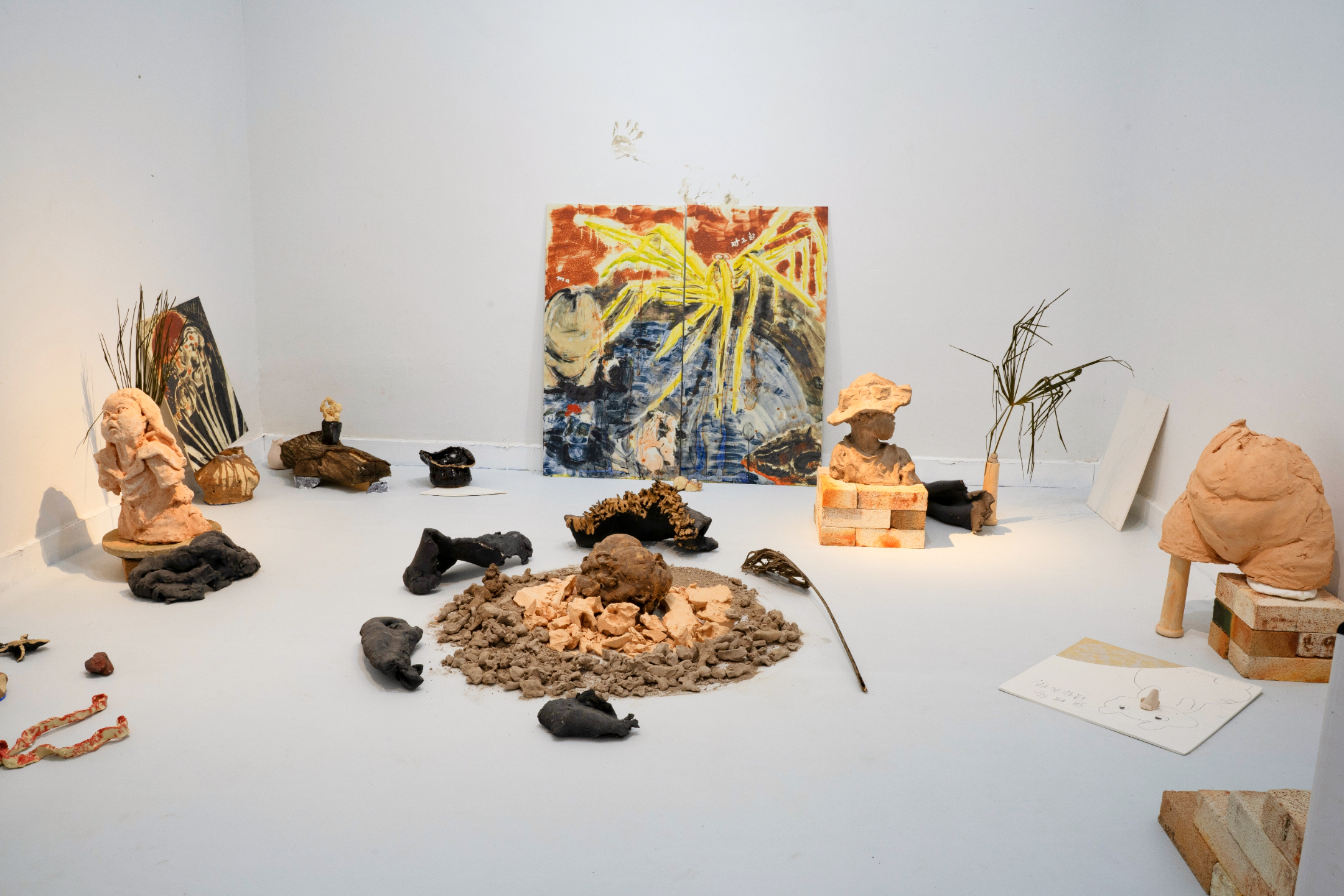


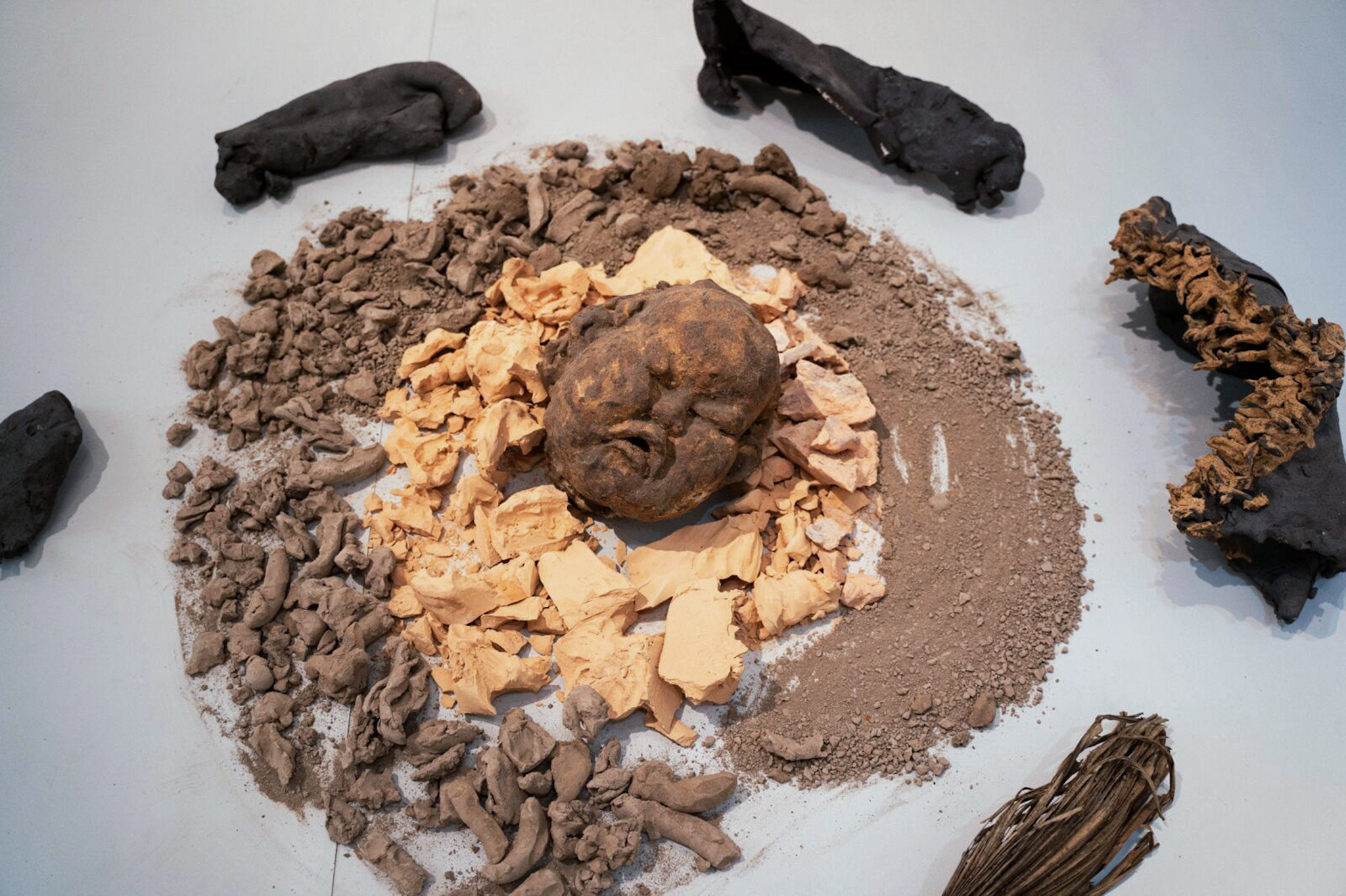
120 x 120 x 22 cm
iron oxide, various clay and firing atmosphere, recycled clay and bisque fragments
2024
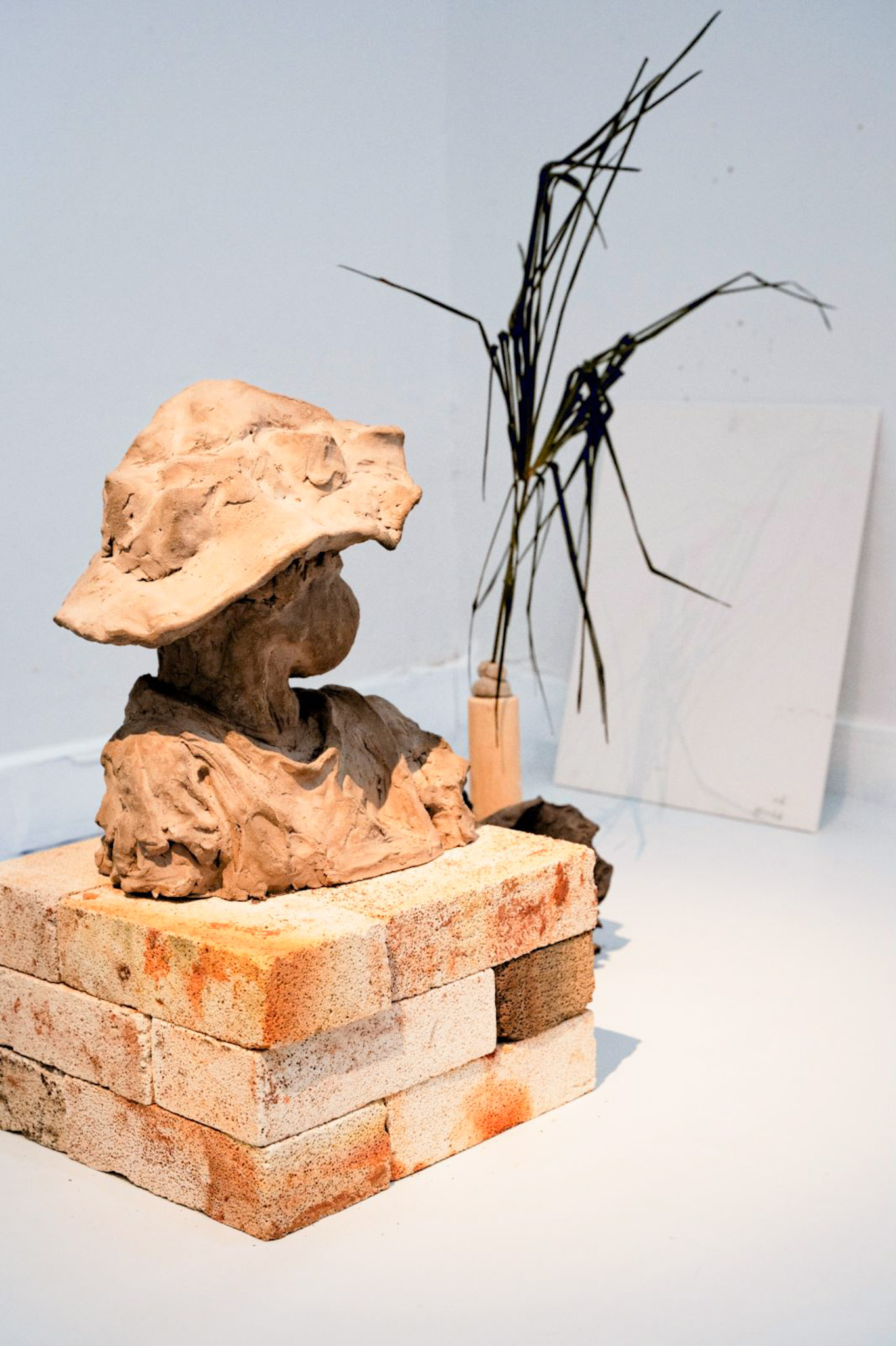
38 x 38 x 82 cm
English clay, green ware, used mullite kiln bricks, a palm leaf, bisque kaolin panel, pencil, pottery
2024
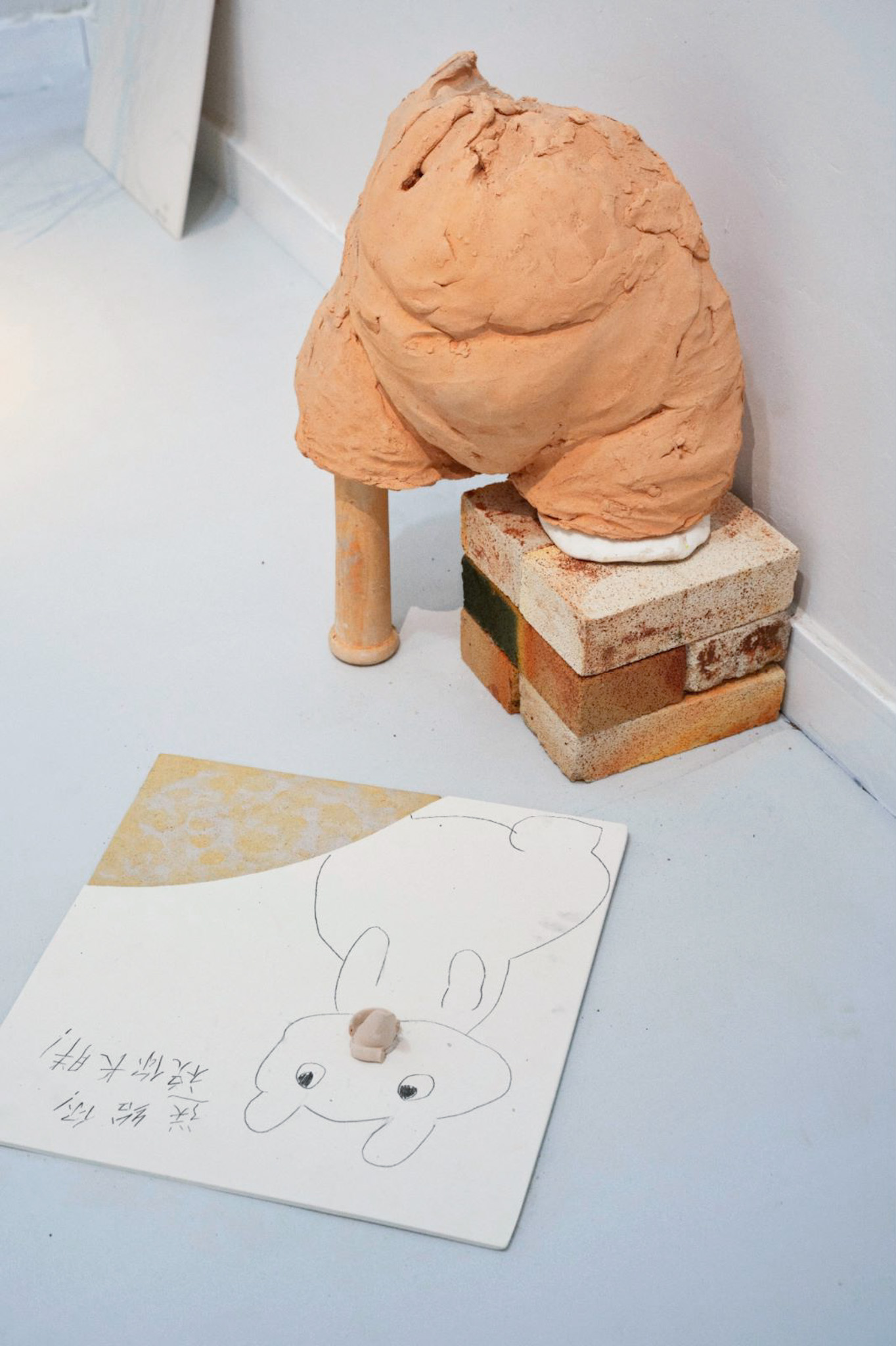
48 x 38 x 88 cm
Foshan clay, bisque ware, used mullite kiln bricks, bisque kaolin panel, pencil, peephole
2024
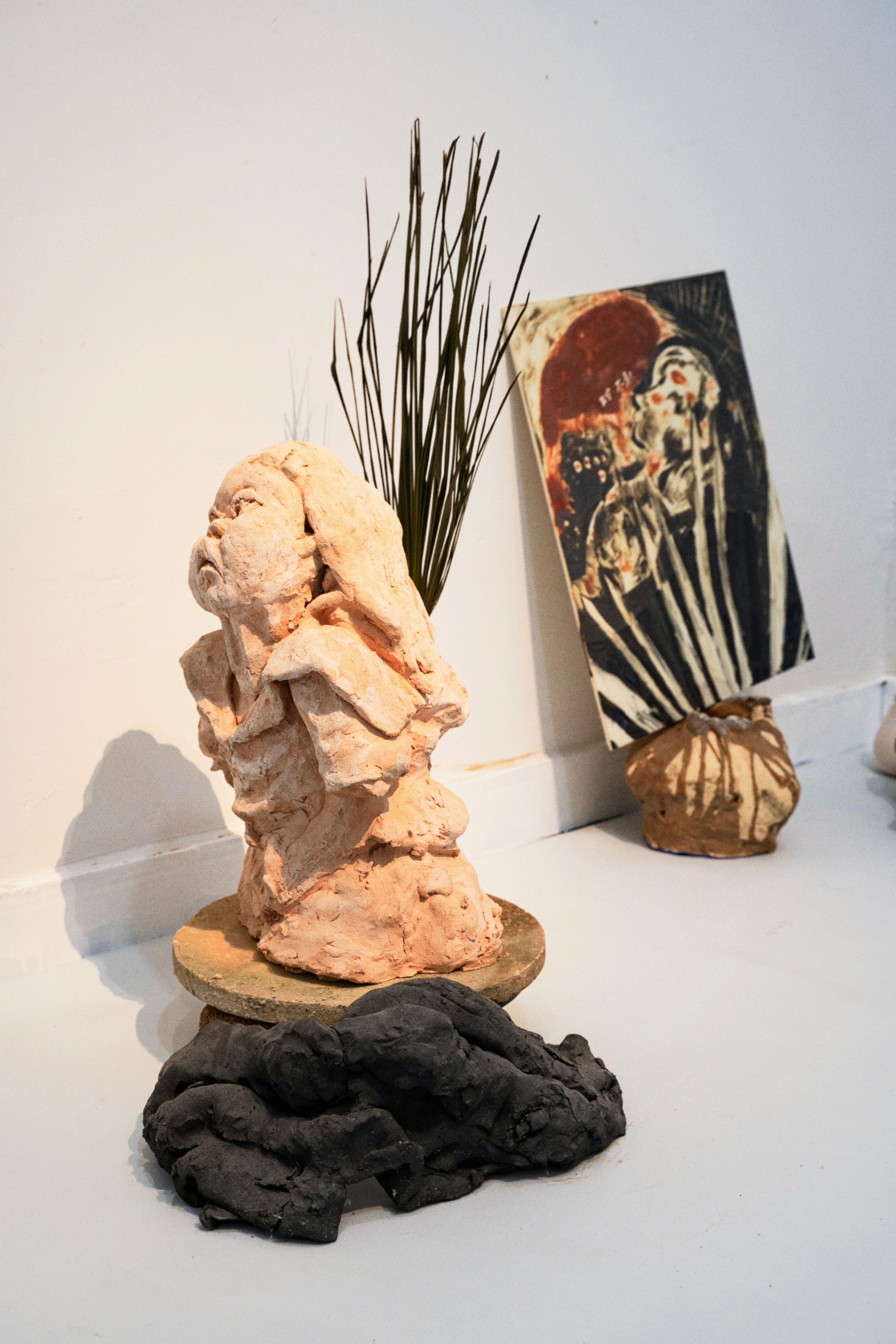
26 x 32 x 48 cm
iron oxide, various clay, a palm leaf, a glazed ware, glaze on kaolin panel, sculpting wheel, used sagger plate
2024
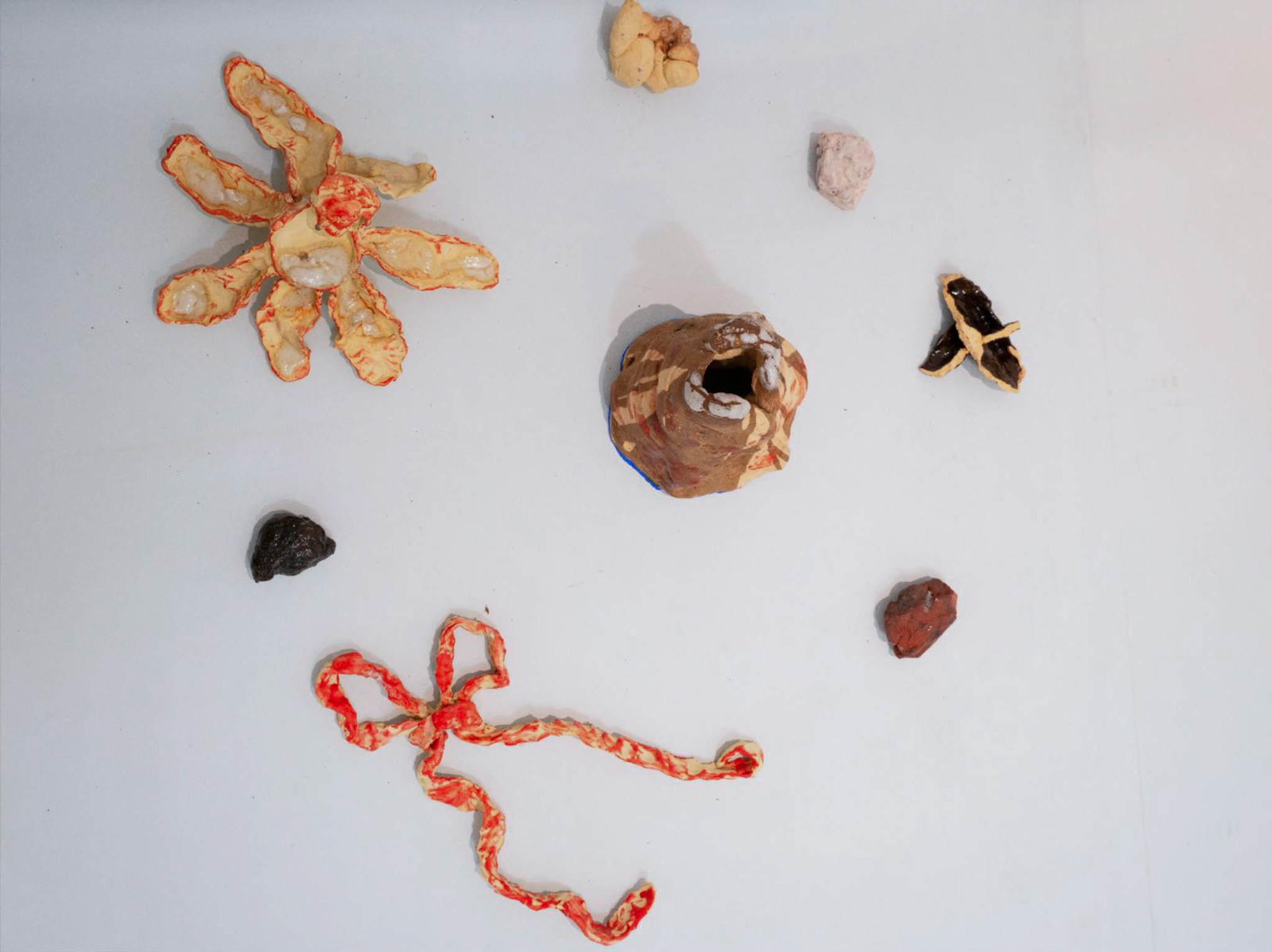
50 x 50x 22 cm
glaze, metal oxides, DIY slip
2024
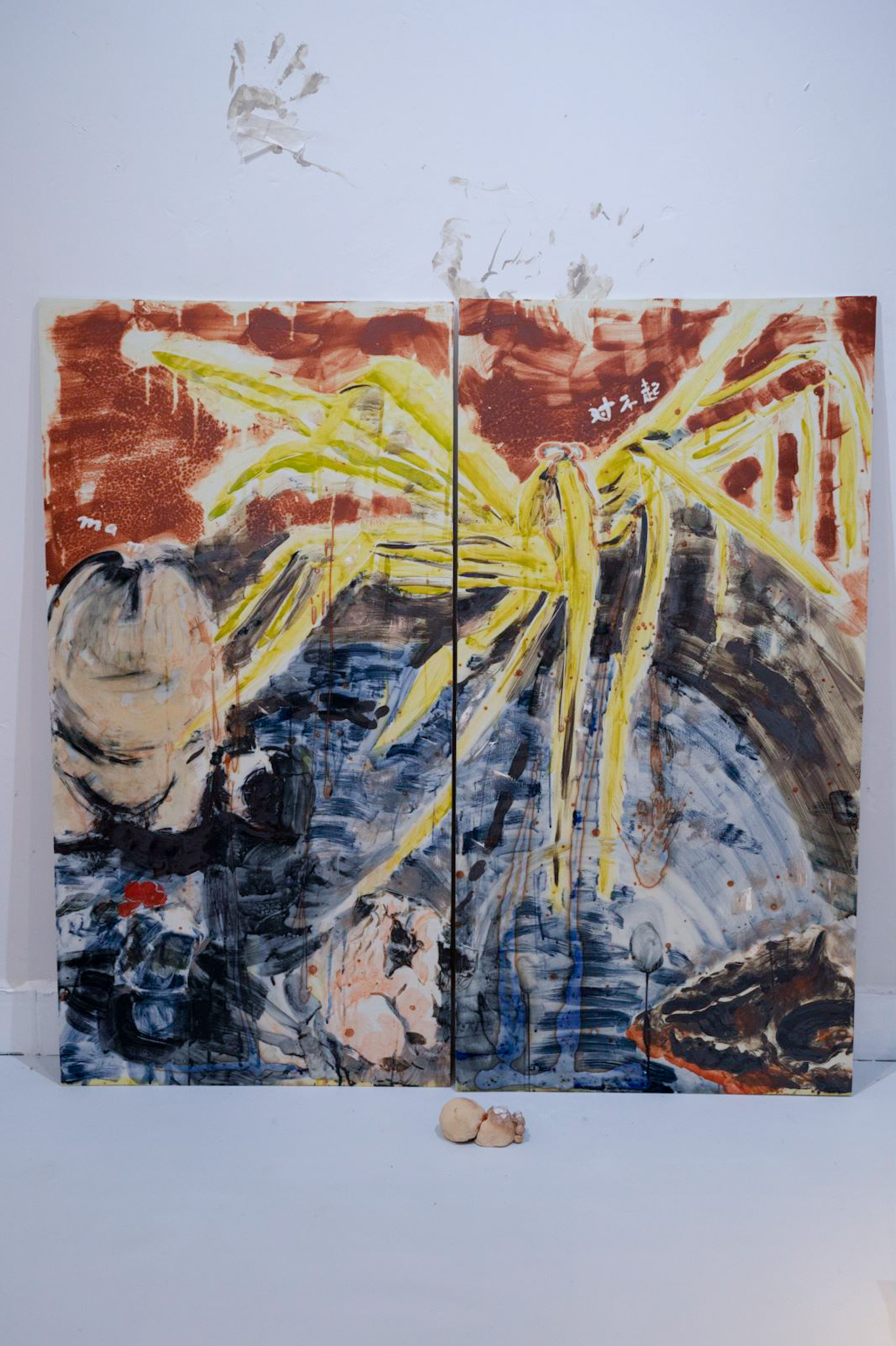
160 x 80 x 0.8 cm x 2
DIY slip and glaze on kaolin panel, fired in reduced atmosphere
2024
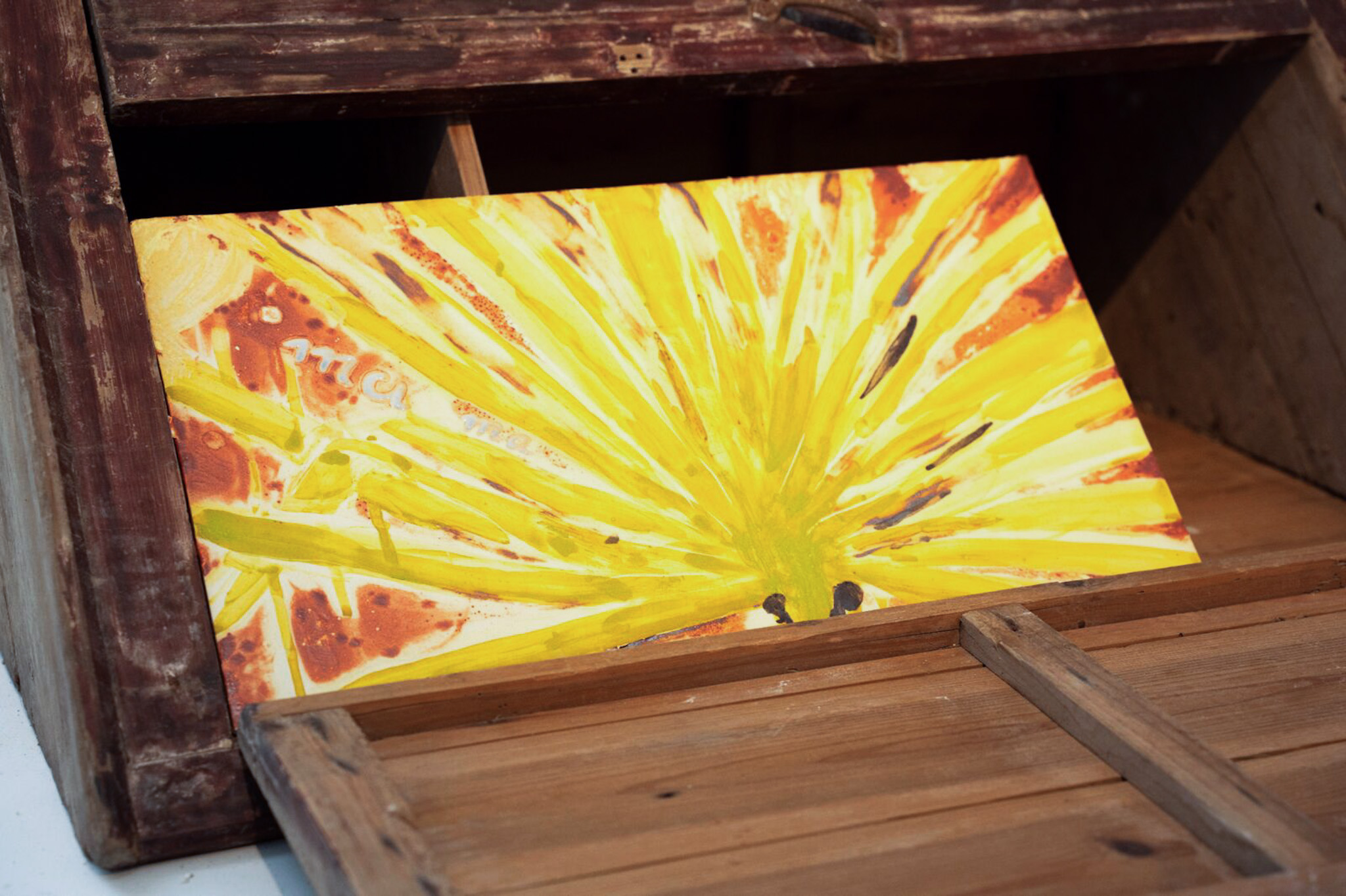
30 x 27 x 0.8 cm
DIY slip and glaze on kaolin panel, fired in reduced atmosphere
2024
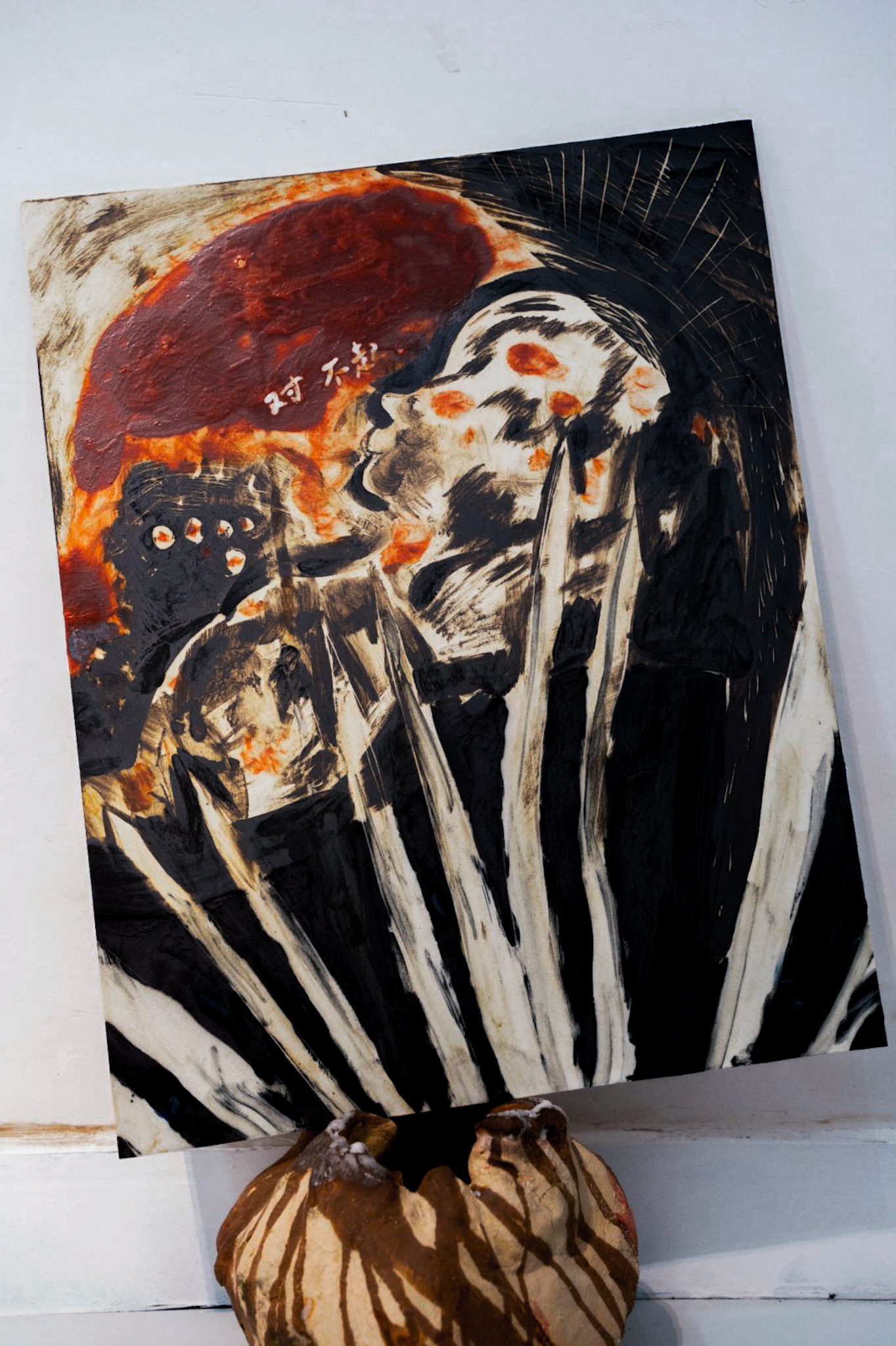
30 x 52 x 0.8 cm
DIY slip and glaze on kaolin panel, fired in reduced atmosphere
2024